List of Korean flags
This is a list of flags used by South Korea, North Korea, and their predecessor states.
Korean reunification flag
| Flag | Date | Use | Description |
|---|---|---|---|
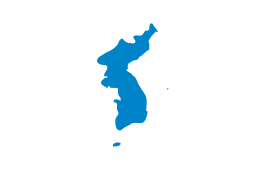 | 1991–present | Korean Unification Flag | Used to represent the whole of Korea when North and South participate together in international sporting events.[1] |
National
| Flag | Date | Use | Description |
|---|---|---|---|
| Present national flags of North and South Korea | |||
 | 1948–present | (Taegeukgi) | White field with a red and blue taegeuk in the center and four black trigrams, one in each corner of the flag. Current, post-2011 version shown. |
 | 1948–present | (Ramhongsaek Konghwagukki) | Red field with a blue bar on the top and bottom and a star in the center known as the red flag. Current, post-1992 version shown. |
| Historical versions | |||
.svg.png) | Extant 1392 | Also known as the "Bong-gi". | |
.svg.png) | Extant 1856 | ||
.png) | Extant 1876 | ||
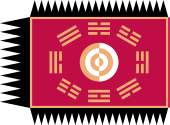 | 1882–1907 | ||
.svg.png) |
1882–1910 | The third version from the top is depicted in the 1882 U.S. Navy book, Flags of Maritime Nations. Lowest is the version found in the 1944 United States postage stamp series. |
The former Korean imperial flag had a different taegeuk from that in the current South Korean flag. Note that the 1882 U.S. Navy depiction may be left-right reversed. The arrangement of the trigrams was not officially fixed until an ordinance of 1948, when the South Korean government was established. |
.svg.png) | |||
 | |||
.svg.png) | |||
.svg.png) | |||
 | |||
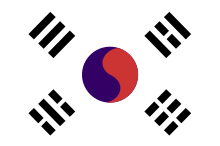 | 1919–1948 | In exile in Shanghai and Chungking located in China | |
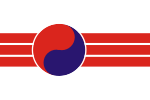 |
1945–1946 | Used by the People's Committees throughout postwar Korea | |
South Korean national government
| Flag | Date | Use | Description |
|---|---|---|---|
| Presidential Standard | |||
 | 1967–present | Two Phoenix taking golden Hibiscus syriacus under their wings. | |
| Standard of the Prime Minister | |||
 | 1988–present | Golden Hibiscus syriacus inlaid in symbolic Hibiscus syriacus insignia | |
| Flag of the National Government | |||
.svg.png) | 1988–2016 | Symbolic Hibiscus syriacus insignia, inlaid with the word 정부, or Government. | |
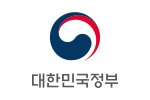 | 2016–present | Taeguk with the words "Republic of Korea Government" below. | |
| Flag of the Committee for the Five Northern Korean Provinces | |||
 | 1949–2016 | Symbolic Hibiscus syriacus insignia, covered by a blue arrow. | |
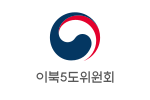 | 2016–present | Taeguk with the words "Committee for the Five Northern Korean Provinces" below. | |
North Korean government
| Flag | Date | Use | Description |
|---|---|---|---|
| Standard of the Chairman of the State Affairs Commission | |||
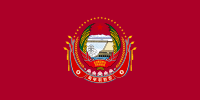 | 2018–present | Emblem of the Chairman of the State Affairs Commission on a dark red field. | |
Military
| Flag | Date | Use | Description |
|---|---|---|---|
| North Korea | |||
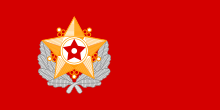 | |||
 | 1948–present | ||
 | 1948–present | Shows Mount Paektu and Heaven Lake. | |
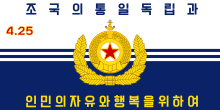 | 1948–present | ||
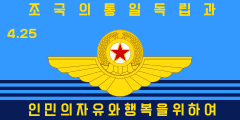 | 1948–present | ||
| South Korea | |||
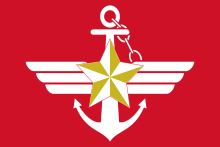 | 1948–present | Insignia of the Ministry on red field. | |
 | 1946–present | Insignia of the Army on a field parted per fess, above is white, below is blue. | |
 | 1955–present | Naval ensign, navy flag, and naval jack | |
 | 1952–present | The resemblance to the flag of the U.S. Marine Corps shows the strong American influence on the creation of South Korean government and military. | |
 | 1952–present | ||
| Joseon | |||
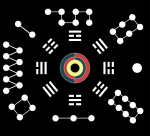 | Shows a version of the Lo shu magic square. | ||
References
- Myers, Brian Reynolds (7 February 2018). "On the February 8 Parade and the Olympics". Sthele Press. Retrieved 9 February 2018.
By forbearing to march behind the yin-yang flag at the opening ceremony of the Olympics, the South Korean athletes are making a bigger sacrifice than the North Koreans... [T]he peninsula flag means two very different things to the two Koreas. In the South it symbolizes a desire for peaceful co-existence, or at most for a unification of equal partners in the reassuringly remote future. In wall posters above the DMZ it has always symbolized the southern masses’ yearning for “autonomous unification,” meaning absorption by the North. It’s worrying to think how inner-track propaganda is certain to misrepresent the South Koreans’ eschewal of their state flag for this of all symbols — and at this of all events.
- "History of the South Korean flag". www.crwflags.com.
- http://internationalcongressesofvexillology-proceedingsandreports.yolasite.com/resources/23rd/Kariyasu-TheHistoryofTaegeukFlags.pdf
External links
| Wikimedia Commons has media related to |
This article is issued from Wikipedia. The text is licensed under Creative Commons - Attribution - Sharealike. Additional terms may apply for the media files.